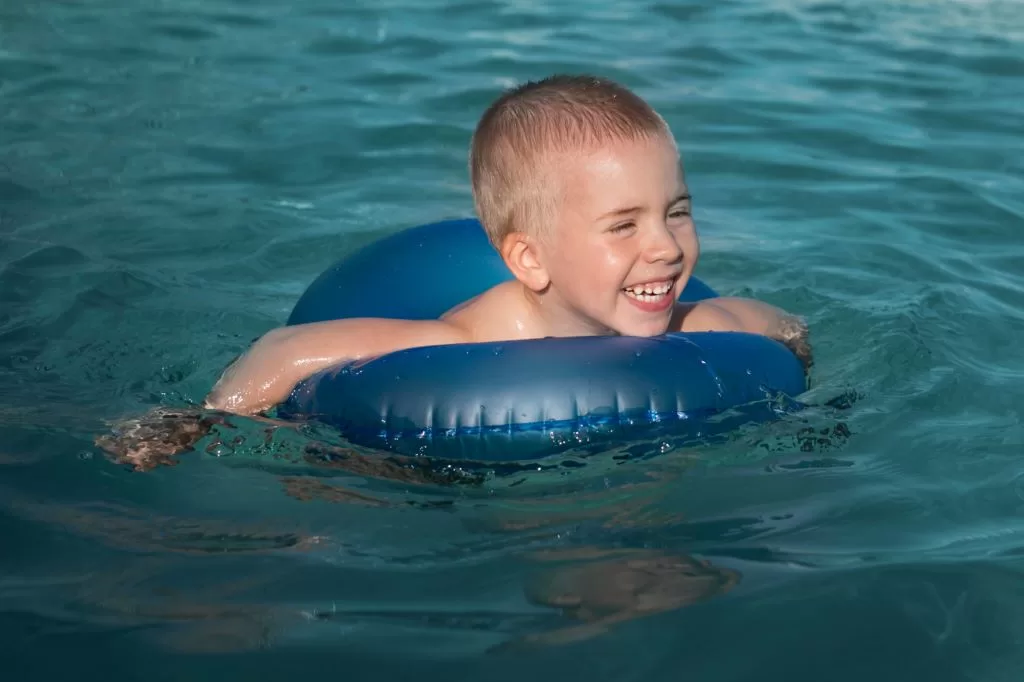5 MUST-KNOW TIPS FOR BABY SWIMMING SAFETY | AFFINITY HEALTH
Affinity Health, a leading provider of high-quality health coverage, shares five must-know tips for baby swimming safety.

“There are countless reasons your child needs to learn to swim,” said Murray Hewlett, CEO of Affinity Health.
“Above all, swimming is the only sport to save your child’s life.”
Drowning is one of the top five causes of accidental death among children, making swimming a vital life-saving skill.
When Can Babies Start Swimming?
You might be surprised that babies as young as a few hours old can be put in water. But even though you can start from birth, most baby swim lessons begin around three months or a little later. There’s no rush if you feel your baby isn’t quite ready. A good rule of thumb is to wait until your baby feels comfortable and happy around water.
Water Safety Tips for Babies
Stay Close: Always stay within arm’s reach of your child. Keep them close and alert – babies can drown in a small amount of water.
Watch Inflatable Pools: Soft-sided pools may seem harmless but can be risky. Little ones can easily tip over into these. Always supervise closely, empty smaller pools after use, and fence off larger pools.
Learn CPR: All parents should know CPR and basic water safety. To learn more about CPR, click here.
Avoid Floaties: The American Academy of Paediatrics (AAP) and the Centers for Disease Control and Prevention (CDC) both advise against using air-filled floaties (such as water wings). They can create a false sense of security and deflate or pop easily.
Secure Your Pool: Any home pool should have four-sided fencing at least 1.2 metres high, a secure gate, and a safety net.
Tips for Teaching Babies to Swim and Get Comfortable with Water
Start in the Tub: The bathtub is a great place to get your baby used to water. You can even hop in with them to make it a fun, safe experience. Pour a cup of water over their head and let it gently trickle over their face to get them used to the sensation.
Pick the Right Time: While babies can be introduced to water from a young age, be cautious not to submerge their faces too early. You can begin when you feel comfortable, as long as any healing (like from a belly button or circumcision) is complete. Early exposure can help them become more at ease in the water.
Make It Fun: Your body language says a lot. Smile, keep eye contact, and show your baby that the water is a safe, fun place to be. Singing songs or playing simple games can keep your baby engaged and happy.
Mind the Temperature: The water should be more like a warm bath than a cold plunge—about 26°C. Keep an eye on your baby’s lip, finger, and toe colour; it’s time to get out if they start turning blueish.
Create a Calm Environment: Choose a quiet, shallow pool spot, and ensure your baby is well-rested.
Don’t Push It: If your baby seems scared or upset, taking a break is okay. Take them out of the water, reassure them, and try again later.
Go Slow: Hold your baby in your arms and use a cup to pour water over their body, allowing them to adjust to the temperature. Gradually immerse them up to their shoulders, but always keep their head above water.
Motorboat Legs: Let your baby’s feet dip into the water while you gently pull them around. This encourages kicking and helps them get used to the sensation of water resistance.
Follow the Leader: Babies love to imitate their parents. If you dip your toes or nose into the water, your little one might try to do the same. It’s a natural and playful way to encourage them.
First Stroke: Want to get them moving? Place a floating toy just out of reach and encourage them to stretch out for it while you hold it. It’s a great way to start teaching stroke-like motions. Just remember to remove all toys from the pool – and pool area – as this can attract children to the water unsupervised.
Tummy Time: Lay your baby on their stomach on a foam mat and gently move it back and forth. It helps strengthen their back and neck muscles while they get used to floating.
Combining these tips and strategies from Affinity Health can create a safe and enjoyable experience for your baby in the water. Remember, it’s all about building comfort and confidence – one splash at a time.
About Affinity Health
Affinity Health is South Africa’s leading health coverage provider, offering you a range of options at affordable rates, including access to the widest national provider network. We understand the importance of having medical insurance that meets your needs, budget, and lifestyle. Our healthcare products are designed to protect you and your family when it matters the most. We strive to give our clients peace of mind and the highest standard of service. For more information, follow us on Facebook, Twitter, and Instagram.




























